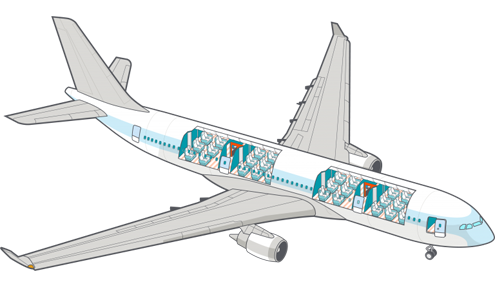Benefits of 3D Printed Interior Components
Leading
aerospace manufacturers are migrating to AM to push the envelope of what’s possible in the world of flight. Aircraft design is evolving rapidly with a new sophistication taking over the scene. As global competition increases, it’s more important than ever to stay ahead of the curve. Additive manufacturing has proved to be a key element of maintaining a competitive edge in aircraft manufacturing.
One of the primary benefits of 3D printed parts is a reduction in weight – passing along continued operational savings during the life of the aircraft. . Components can be built in lightweight materials, with thinner walls than injection molding. Additive manufacturing easily produces complex geometries, allowing for part consolidation and design iterations that significantly reduce weight.
Free from the constraints of conventional manufacturing and tooling, engineers can design and further optimize the performance of aircraft components. Custom interiors accommodate specific airline needs and functions on similar aircrafts. For any specialized, missions specific aircraft, interiors may have critical custom needs, a perfect function for 3D printing to solve.
Applications
There is a wide range of aircraft interior applications that are utilized today, with more in development. The following details areas on an aircraft that designers and manufacturers might consider for 3D printing.
Within the functional interior of an aircraft there are significant applications to speak to including:
- Ducting
- Vents
- Plenums
- Aft equipment bay ventilation
- Baffles
- Cable management
- Electrical housings
Additional applications possibilities comprise cosmetic parts in cabin, cockpit, galley and bay sections. These applications include:
- Bins dividers
- Light covers
- Escutcheons
- Bezels
- Trim
- Curtain clips and headers
- Signs
- Door latch components
- Seat end and arm rest caps
Aircraft designers can also take advantage of 3D printing for the development of scale models and full scale mockups.



